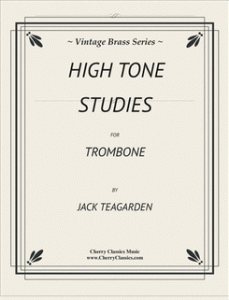A long time ago, in that great and expansive past history of the slide trombone, at least two things were foretold:
- The trombone (sackbut, serpenty-slide, etc.,) will be made into something called a “video game” featuring a trombonist with a giant head. This game will be played even by people who do not play the trombone, and lo, even by people who have no real interest in playing a real trombone. Even further lo, this game shall sound much weirder than a real trombone, with slide accuracy that shall have real trombonists everywhere shaking their heads, not in a good way, even though hitting slide positions is apparently part of the whole point of the game.
- Trombonists will, well into the future, get together and talk about which slide oil, lubricant, etc., really works the best (on real trombones).

You’re holding it wrong, dude.
The first prophecy was always going to be a little tricky, and frankly it seemed like a long shot, but here we are. Welcome to the future! It’s just starting now. The second? Easy. Fulfilled for years. The problem, of course, is that no one will ever be able to really decide which slide lube works the best. Oh sure — people will get close. Here in the technical vastness of the future, many say the best is Yamaha Slide Lubricant, which in the more immediate past was known as Yamaha Slide Oil. Some “swear by” Slide-O-Mix, or “Rapid Comfort.” But when it comes to slide action, will there ever be any real comfort?
Related:
- An Actual Trombonist Attempts to Become the Trombone Champ
(Slate Magazine)


